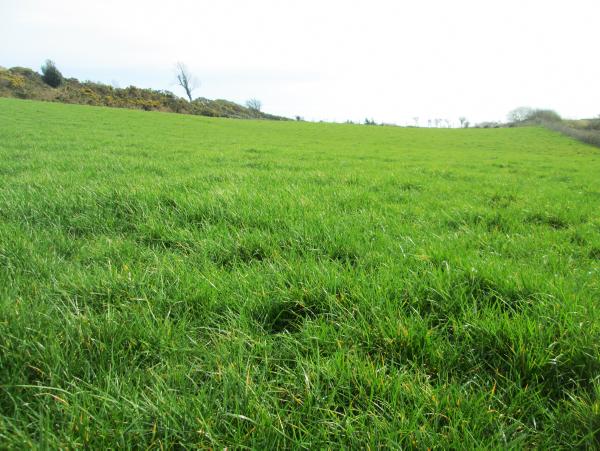John Milligan Castlewellan
With a welcome change in weather this week, the focus is now on getting priority stock out to grass where possible.
In general, ground is still very wet and it will take at least this week to soak even on the more free-draining fields. Fortunately, I had closed up the drier fields by late October and these now have a good cover of grass in the range of 2,500kg DM/ha (7cm) which is ideal for grazing in the first rotation.
The first cattle to be turned out this weekend will be the lightest cattle, which are the 2013 spring-born heifers and bucket-reared calves purchased last November.
By splitting fields using an electric fence, I will get a rotation going. Ideally, these paddocks will be grazed tight (to 3.5cm to 4cm) which will help improve grass quality in the next rotation.
The spring-born calves have received a blackleg booster (Bravoxin 10), having already been vaccinated last summer. The bucket-reared calves and autumn-born suckler calves received two blackleg vaccinations four to six weeks apart in January and February. Autumn-born suckler calves are still sucking their mothers and will be turned out during the day by this weekend.
I have found getting cattle out at this time of year, even if it is only during the day, helps to boost performance. It reduces the cost of DLWG by eliminating the need for meal and also reduces silage demand. Most of the steers, born in spring 2013, and dairy bred calves, bought in autumn 2012, are grazed on an outfarm. I hope to gradually get some of these turned out over the next couple of weeks.
Meal has been reduced to 1kg/day over the past month, leaving them in a condition score of 2.5 to 2.75, which is ideal to allow cattle to get compensatory growth post turnout. All cattle are being weighed going to grass.
The debate at this time of year is what fertilizer to apply for grazing, urea or calcium ammonium nitrate (CAN). I forward-bought CAN in January before the prices increased and am applying this at a rate of one bag per acre on ground where covers are too heavy for slurry.
When pricing nitrogen, there was little difference in either CAN or urea when calculated on nitrogen content. With sunny weather this week, perhaps I will have fewer losses with CAN.
I took soil temperatures on Monday. Fields ranged from 6.8°C to 7.3°C, which is not surprising given the mild winter. With good responses predicted from fertilizer applications when soil temperatures are above 5°C, I will hopefully get good value from fertilizer applied.
Ideally, I would like to get more slurry out now. But with ewes lambing in early April and a dry forecast, I do not want to leave slurry caked on grass as all fields will be grazed with either cattle or sheep before being closed by late April for silage.
Therefore, watery slurry will only be applied at a rate of 2,500 to 3,000 gallons per acre where grass covers are lower and ground is trafficable with the rest applied when closing for silage.
The spring herd, which consists of 45 cows and 15 in-calf heifers, is due to calve from late March until May. So, along with lambing, April is set to be a busy month.
All beef cattle are slaughtered and an extension to the beef house has freed up more space. Cows due to calve first have been moved to a shed closest to the house and calving pens are power-hosed and disinfected.
At calving, the priority is to have calves born on a dry, clean straw bed. Each calf’s naval is treated with iodine and I aim to get colostrum into calves through suckling in the first hour after birth.
In late January, I blood sampled six of the spring calving cows at random to determine mineral and vitamin status. The bloods were analysed through AFBI, Stormont, for copper, selenium, iodine and vitamin E.
Results showed some cows are deficient in iodine, which is associated with weak calves at birth, an increased incidence of retained placentas and generally reduced animal performance, which could also impact on fertility.
Cows showing the lowest iodine results have been treated with iodine over their backs, however, this will only give a short-term boost. All cows and in-calf heifers have been given two high-iodine boluses which also provide supplementary selenium and cobalt. They cost approximately £10 per animal. Using boluses should help cover cows over the calving and breeding period at grass where I find supplementation more difficult to control.












SHARING OPTIONS